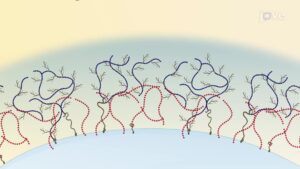Red Light Therapy: The Science, Benefits, and What to Know Before You Try It
What Is Red Light Therapy?
Red light therapy, formally known as photobiomodulation (PBM), is an emerging treatment that uses low-level light wavelengths to stimulate cellular activity. Whether offered through panels, wearable devices, or full-body saunas, this therapy has gained popularity for its role in muscle recovery, inflammation control, and even brain and skin health.
There are multiple types of light therapy based on wavelength, including:
- Red Light (600–680 nm): Best for skin and surface-level tissues.
- Near-Infrared (808–850 nm): Penetrates deeper into muscles, tendons, and joints.
- Mid-Infrared (980–1,000 nm): Reaches deeper tissue layers for targeted recovery.
- Far-Infrared: Primarily used for systemic effects like detoxification and circulation enhancement, rather than mitochondrial stimulation.
How It Works: Cellular Energy and ATP Production
Photobiomodulation works by targeting the mitochondria, the energy-producing parts of your cells. When exposed to specific wavelengths of red or near-infrared light, mitochondria produce more ATP (adenosine triphosphate), the fuel for cellular repair and function. Increased ATP production can lead to:
- Enhanced tissue healing
- Reduced oxidative stress
- Decreased inflammation
- Improved cellular performance
This mechanism is why red light therapy is used by both athletes and patients recovering from injury or chronic inflammation.
Red Light Therapy for Athletes: Performance & Recovery
Whether you’re a runner, cyclist, or weightlifter, red light therapy may significantly enhance recovery and performance. Here’s what current research and clinical application suggest:
- Improves endurance: Reduces time to exhaustion and improves oxygen uptake during exercise.
- Decreases fatigue: Lowers lactic acid buildup and increases VO2 max.
- Accelerates muscle recovery: Reduces post-workout soreness and inflammation.
- Prevents injury: Supports collagen remodeling and tissue repair.
According to clinical studies, red and near-infrared light therapy before a workout can increase muscle strength and peak torque, while post-workout sessions accelerate muscle recovery and reduce inflammatory markers.
Pre vs Post Workout: When to Use It
Red light therapy can be used both before and after exercise:
- Pre-Workout: Enhances performance, endurance, and repetition capacity.
- Post-Workout: Supports faster recovery, reduces delayed onset muscle soreness (DOMS), and improves tissue resilience.
However, using both may be time-consuming unless you own your own device. For those relying on facilities or clinics, post-exercise use is typically more common and beneficial for recovery-focused routines.
Different Device Types and Applications
Red light therapy devices come in a variety of forms:
- Panels: Wall-mounted or portable boxes emitting red or infrared light.
- Wearables: Straps, cuffs, or wraps applied to specific areas like joints or muscle groups.
- Targeted Devices: Flashlight-style emitters for joints, neck, or face.
- Helmets: Used for hair growth or potential neurological applications.
- Infrared Saunas: Enclosed full-body devices using mostly far-infrared wavelengths for detox and systemic effects.
The key is matching the device to your desired outcome. Superficial issues like skin healing benefit most from red light, while muscle and joint recovery require near or mid-infrared exposure.
Beyond Muscles: Skin, Brain, and Systemic Benefits
Red light therapy isn’t limited to athletes. It’s increasingly used for:
- Skin repair: Supports healing of eczema, psoriasis, surgical wounds, and acne scars.
- Hair regrowth: Helmet devices stimulate scalp circulation and follicle health.
- Brain health: Preliminary studies suggest potential in treating neurodegenerative diseases like Alzheimer’s by reducing amyloid plaques and tau tangles in animal models (source).
- Systemic effects: Far-infrared saunas increase circulation, promote detoxification, and may reduce blood pressure due to vasodilation.
Understanding Wavelengths: What You See (or Don’t See)
Not all light is visible. Red light appears red because it’s in the 600–680 nm range and affects only the surface layers. Near and mid-infrared light, however, is colorless and penetrates deeper. Far-infrared isn’t used to stimulate mitochondria directly—it works by generating heat that increases circulation throughout the body.
If you don’t see red light in your sauna, it may be a far-infrared model. That’s normal—and expected—since these wavelengths are invisible but still effective at triggering systemic responses like detoxification and stress relief.
What to Look for in a Red Light Therapy Device
If you’re considering purchasing a red light therapy device, here are key factors to keep in mind:
- Wavelength range: Choose 600–850 nm for muscle, skin, and joint benefits.
- Device size: Larger panels cover more area but are more expensive.
- Irradiance (power): Look for devices with clinically tested light output for efficacy.
- Treatment goals: Use red light for skin, near/mid infrared for deep tissue, and far infrared for full-body detox and cardiovascular benefits.
Safety Considerations and Hydration
Red light therapy is generally safe, but a few precautions apply. Some users report drops in blood pressure, especially after using far-infrared saunas. This vasodilation is beneficial for circulation, but you should remain hydrated and supplement with electrolytes during or after sessions to avoid lightheadedness or fatigue.
Emerging Research and Future Potential
Red light therapy is still evolving. Early animal studies show potential in slowing Alzheimer’s disease progression by reducing amyloid plaques in the brain. Human clinical trials are underway, exploring how deep-penetrating infrared light may improve neurological function and long-term cognitive health.
This technology may soon become a staple in integrative medicine protocols for chronic pain, neurodegeneration, mood disorders, and athletic recovery. As more evidence emerges, red light therapy could shift from “alternative” to mainstream treatment.
Final Thoughts
Photobiomodulation is more than just a wellness trend—it’s a science-backed therapy with broad applications for muscle repair, inflammation, skin health, and potentially even brain function. But knowing the differences between red, near, mid, and far-infrared wavelengths is essential for getting the results you want.
Whether you’re treating sore muscles, healing skin, or investing in long-term health, matching the light type to your health goal is key. And as this exciting field grows, so too will the potential of this remarkable therapy.
Video Summary
For more evidence-based nutrition and fitness tips, subscribe to our channel: https://www.youtube.com/@Vitality-and-Wellness
Looking for extra help with your fitness goals? Check out the personalized Nutrition Program at Parkway Athletic Club: parkwayathleticclub.com/nutrition
Disclaimer: This content is for educational purposes and does not replace personalized medical advice.



